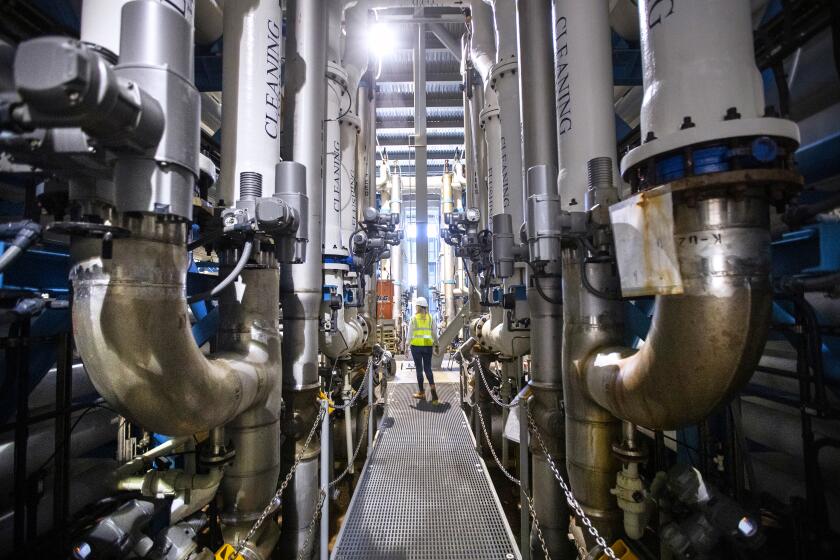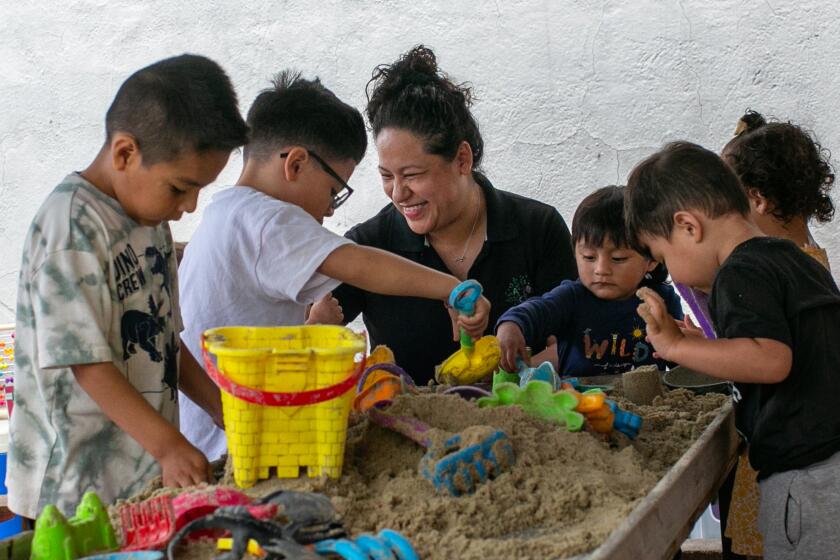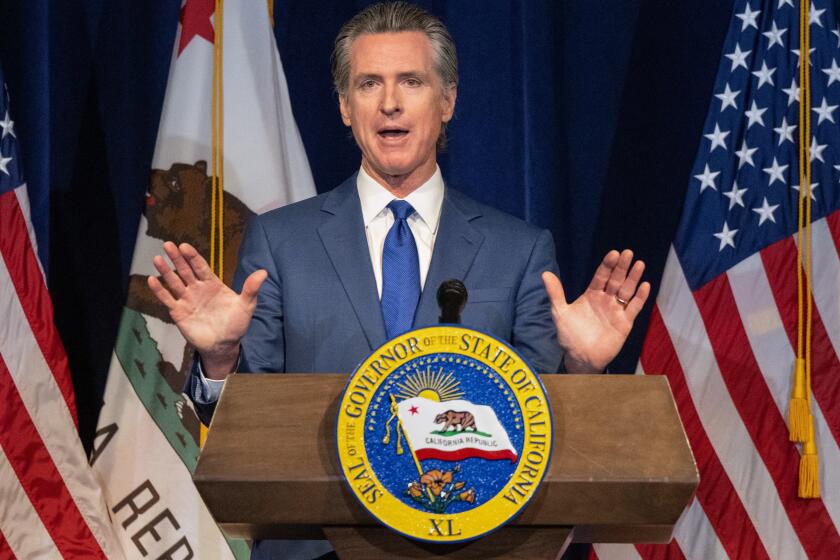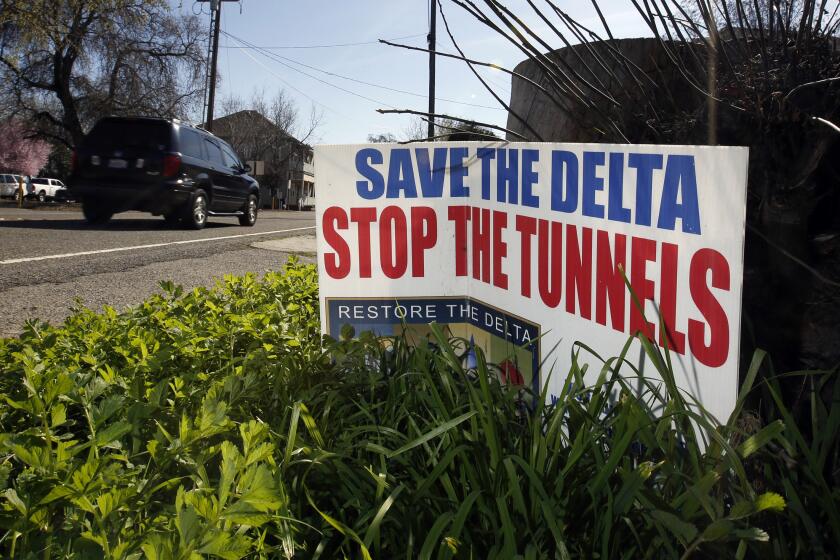Newsom and Democratic lawmakers remain divided on infrastructure plan

- Share via
SACRAMENTO — Democrats leading California’s Senate and Assembly on Monday announced a legislative state budget deal, but they remain at odds with Gov. Gavin Newsom over his sweeping plan to streamline major infrastructure projects and reduce environmental litigation delays.
Newsom introduced a series of budget bills related to infrastructure last month after lawmakers had already wrapped up committee hearings on spending proposals. Fellow Democrats have criticized the governor over the late-arriving legislation and expressed concern about not having sufficient time to consider potential impacts on communities and the environment.
“I just want to express my extreme disappointment that this comes at this time,” said Sen. Susan Talamantes Eggman, a Democrat who lives in Stockton and represents cities in the Sacramento-San Joaquin River Delta, during a Senate hearing last week. “It feels disrespectful to the process, to all the work that we’ve done.”
Newsom’s infrastructure plan could speed up construction of bridges, broadband, water projects and highway maintenance and save the state millions.
Senate President Pro Tem Toni Atkins (D-San Diego) and Assembly Speaker Anthony Rendon (D-Lakewood) said they are “continuing to negotiate and make progress” on a budget deal with the governor. Lawmakers intend to pass their agreed upon budget Thursday to meet a June 15 legislative deadline and then amend the budget bill after reaching a final agreement with Newsom in the coming days.
Though the act of passing a preliminary budget and following up with an amended bill later has become commonplace in Newsom’s tenure, an estimated budget deficit of at least $31.5 billion has heightened Democratic discord at the state Capitol this year. Interest groups are lobbying to preserve funding promised in stronger revenue years and Newsom and lawmakers continue to squabble over where to pare back spending.
The Legislature’s $311.7-billion spending plan unveiled Monday was crafted after 120 public hearings over the last six months. The legislative budget plan increases funding for education, child care, public transit and Medi-Cal over levels Newsom proposed in his revised budget in May. It also reverses Newsom’s plan to spend $450 million from the Safety Net Reserve, an account created to shore up funding for programs such as CalWorks and Medi-Cal during a downturn.
Other areas that need to be ironed out with the governor include:
- Child care: Lawmakers want to provide $1 billion in temporary rate increases for child care providers. The legislative agreement rejects the governor’s proposal to delay opening subsidized child care for 20,000 additional kids and instead releases the slots on July 1, 2024.
As child-care workers struggle to pay bills, in-home providers push for higher wages and urge the state to overhaul rates for its subsidized care program.
- Health care: Newsom and lawmakers are in agreement about using a tax on managed healthcare organizations, known as the MCO Tax, to fund Medi-Cal at a time when the state is expanding eligibility to all immigrants who qualify regardless of immigration status. But the two sides disagree over the timeline to spend the money. The governor wants to spend the tax revenue over eight to 10 years, while lawmakers are pushing to invest $10.3 billion through the end of 2026 to improve reimbursement rates to healthcare providers and expand access to care.
- Transit: Lawmakers also want to restore a $2-billion reduction in transportation funding that Newsom proposed in May.
Newsom’s infrastructure plan remains the biggest point of contention between the governor and lawmakers, who have questioned why the bills must be passed now instead of through the regular and more deliberative legislative process for policy issues that concludes in September, or even next year.
Newsom administration officials said the 10 bills proposed by the governor are critical to meeting California’s climate goals. The governor’s office has called the bills California’s “most ambitious permitting and project review reforms in a half-century” and said the legislation could reduce project timelines by more than three years in some cases.
Some outside interests agree that the bills are important, but also shared the Legislature’s concerns.
Mary Creasman, chief executive of California Environmental Voters, said it’s clear that California needs accelerated permitting for clean energy projects and needs to protect its rich biodiversity.
“We need a thorough policy making process that is not jamming through budget trailer bills,” Creasman said.
Here’s what you need to know about Gov. Gavin Newsom’s plan to offset California’s $31.5-billion budget deficit.
One bill in the governor’s plan aims to reduce the opportunity for lengthy record preparation delays due to lawsuits filed under the California Environmental Quality Act, which can sink building projects. Another proposal would speed up judicial review in CEQA lawsuits related to water, transportation, clean energy, and semiconductor or microelectronic projects.
The changes Newsom has proposed would also make it easier to complete his controversial plan to build an underground tunnel to transport water from the Sacramento-San Joaquin River Delta to Southern California.
Newsom also wants to allow the California Infrastructure and Economic Development Bank, known as IBank, and the Department of Water Resources to take advantage of and leverage federal funding for projects that reduce greenhouse gas.
For public transportation projects, his package would make it easier to approve environmental mitigation and permits for California Department of Transportation projects that affect endangered species or are within the Sacramento-San Joaquin River Delta. Newsom also wants to repeal state laws and reclassify several species that are “fully protected” to “threatened” and “endangered” under the California Endangered Species Act.
A California water advocacy group is criticizing Gov. Gavin Newsom’s proposed Delta Conveyance Project, saying it would be a fiscal disaster.
Another proposal would allow Caltrans to directly contract to construct three wildlife crossings along Interstate 15 in San Bernardino County and to change its contracting procurement process to speed up highway projects.
Newsom wants to allow the state Department of Water Resources and the California Department of Transportation to use a more flexible contracting process for up to eight major projects each.
Atkins said the Senate is reviewing the governor’s proposals and engaging in talks with the Assembly and the administration.
“It’s important to my Senate Democratic colleagues and I that streamlining is in keeping with California’s commitment to environmental protections,” Atkins said.
John Casey, a spokesman for Rendon, said the Assembly is doing the same.
“We are digging in to understand what specific problems the governor is trying to solve and working toward legislation that will address those problems in a workable way,” the speaker’s office said in a statement.
The governor’s office hopes to land a final budget agreement with the Legislature this week.
Staff writers Liam Dillon and Hannah Wiley contributed to this report.
More to Read
Sign up for Essential California
The most important California stories and recommendations in your inbox every morning.
You may occasionally receive promotional content from the Los Angeles Times.















